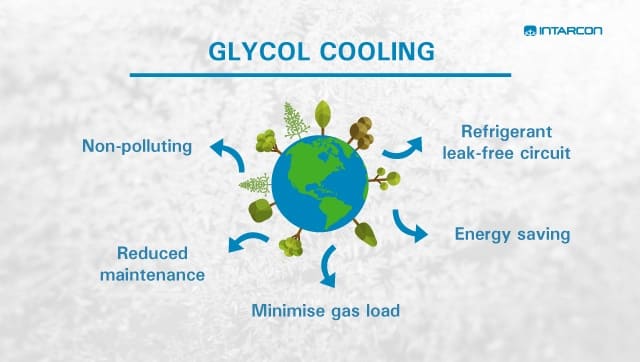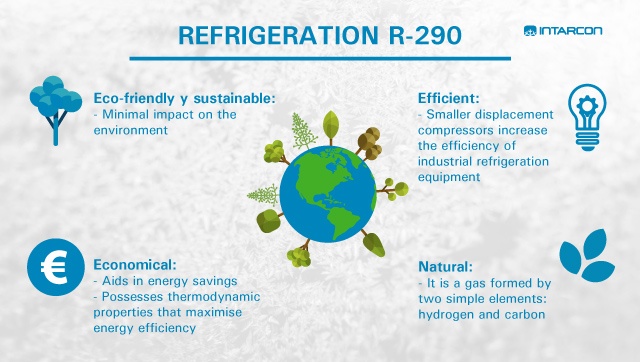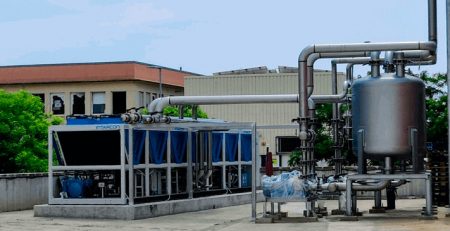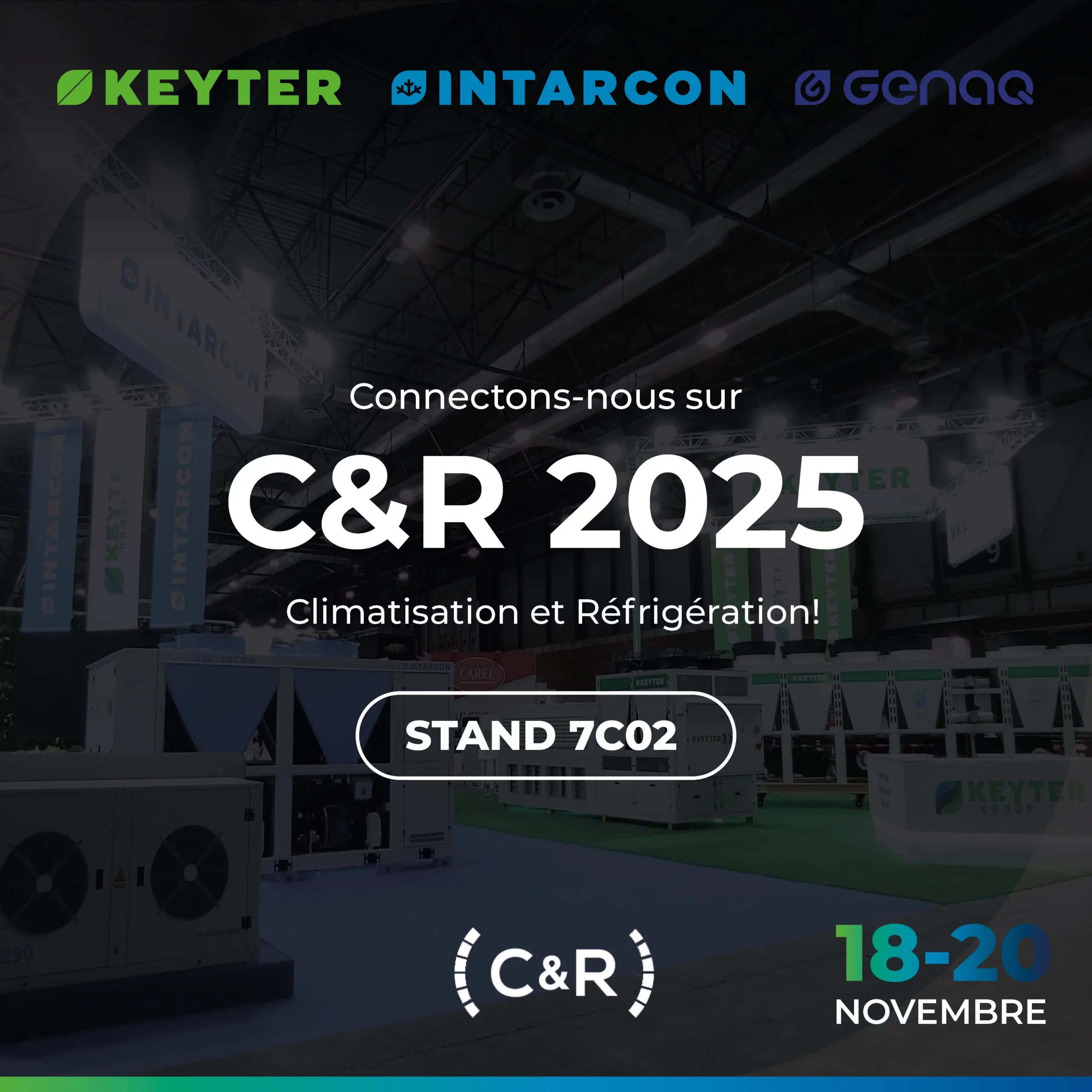Glycol and R290 for industrial and commercial refrigeration applications
INTARCON2024-12-12T08:08:02+01:00Eco-friendly refrigerant gases how glycol and R290 are widely used in refrigeration chambers nowadays. This is the case due to two main reasons:
- The increase in taxes on the use of fluorinated gases.
- For on-going search for an eco-friendly and less polluting alternative.
The recent crisis of fluorinated refrigerants caused by the EU’s restrictions has led to the growing interest in indirect refrigeration systems as compared with conventional direct expansion systems with regards to their use for commercial refrigeration applications. Main difference between direct and indirect systems:
Traditionally, the refrigerant used in indirect systems is distributed directly to the different spaces that must be refrigerated and is then returned to the compressor.
However, in the case of indirect expansion systems, a secondary refrigerant or fluid is used, usually glycol or brine, to transport and distribute cold to the spaces that need to be refrigerated.
We already know what other refrigerants are used for, such as CO2, HFC, NH3, etc. However, what about glycol refrigeration systems? And what about R290 refrigeration systems?
Using glycol as a refrigerant
Glycol is a chemical compound produced by hydrating ethylene oxide. It is an eco-friendly alternative to the use of fluorinated gases, which are very harmful to the environment.
In particular, glycol is an antifreeze agent for water used in cooling installations to use glycol water as a secondary fluid, to achieve a minimum refrigerant charge of both natural and fluorinated refrigerant. The main benefits are twofold: not only is this a very good environmental measure but it also results in high energy savings.
Refrigeration with R290
R290 or propane is a natural refrigerant with a very low greenhouse effect (GWP=3) and is widely available in the market. It is a pure substance, with no slippage during evaporation and an excellent thermodynamic performance, which can only be compared to that of ammonia (R717) or difluoroethane (R152a). It is a low toxicity and highly flammable refrigerant (class A3).
Refrigeration plants meet the safety requirements of the European standard (EN-378:2017), in particular, with regards to the refrigerant charge limits in installations in the open air or machine rooms. These technological advances have been paramount to the development of refrigeration plants that use R290 refrigerant and operate with variable flow rates, creating cutting-edge indirect systems.
Refrigeration units: glycol refrigeration plants, using R290, variable flow rate
This type of refrigeration plant is used for commercial and industrial refrigeration applications, as discussed above. They use a low propane or R290 charge as the plant’s primary refrigerant, and water, glycol or brine as the secondary refrigerant to transport cold. INTARCON offers two plants that use this system:
| IntarWatt Chiller | IntarCube Chiller |
|---|---|
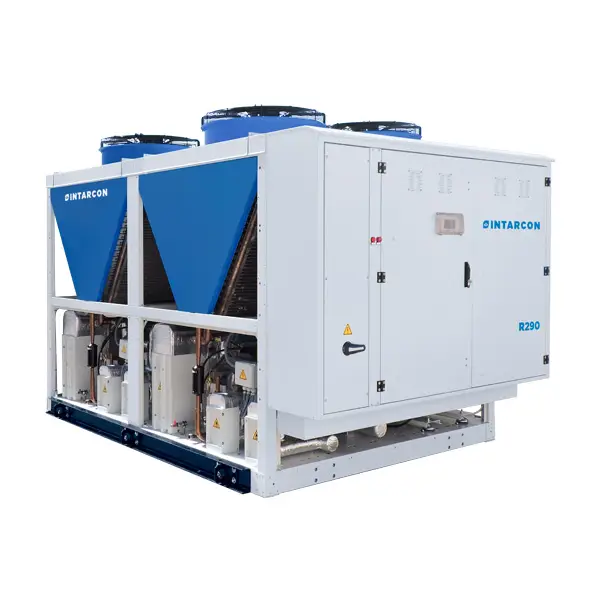 | 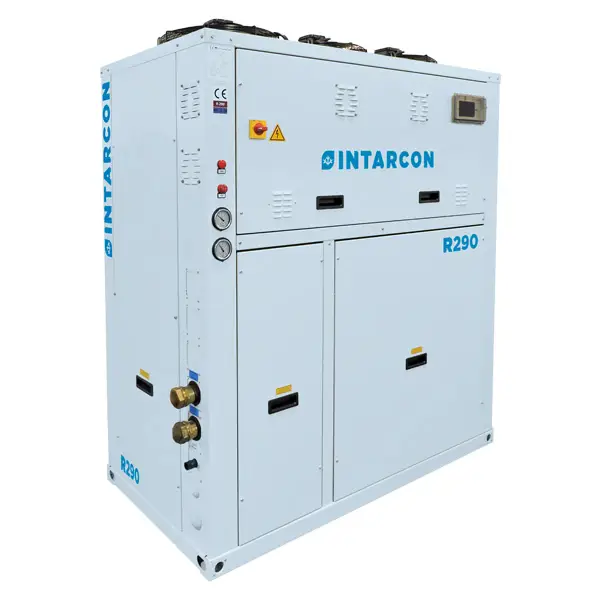 |
